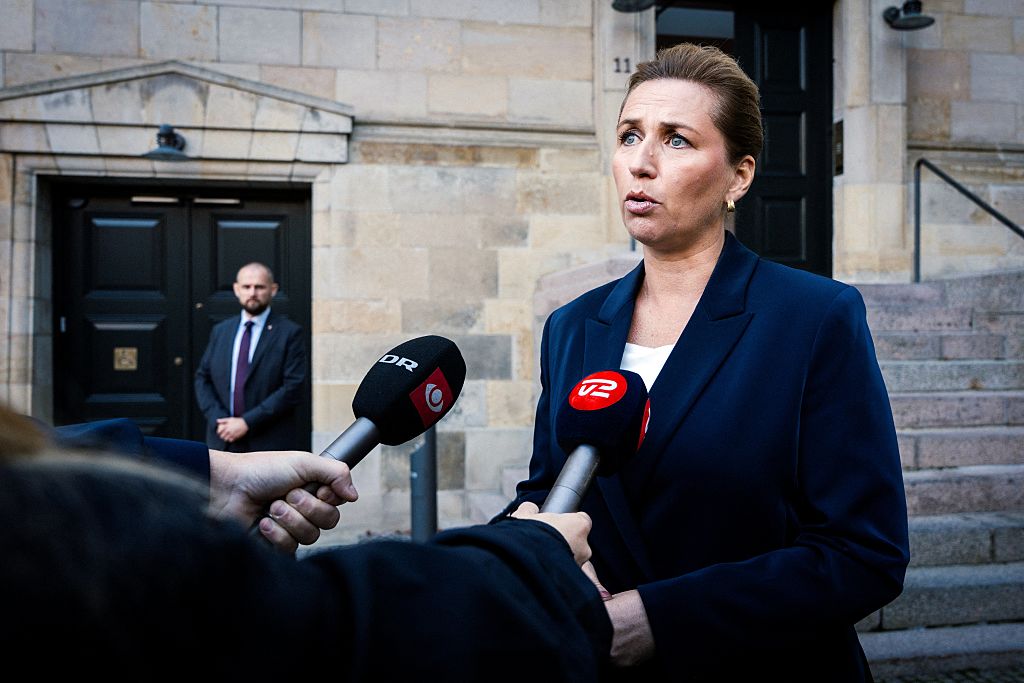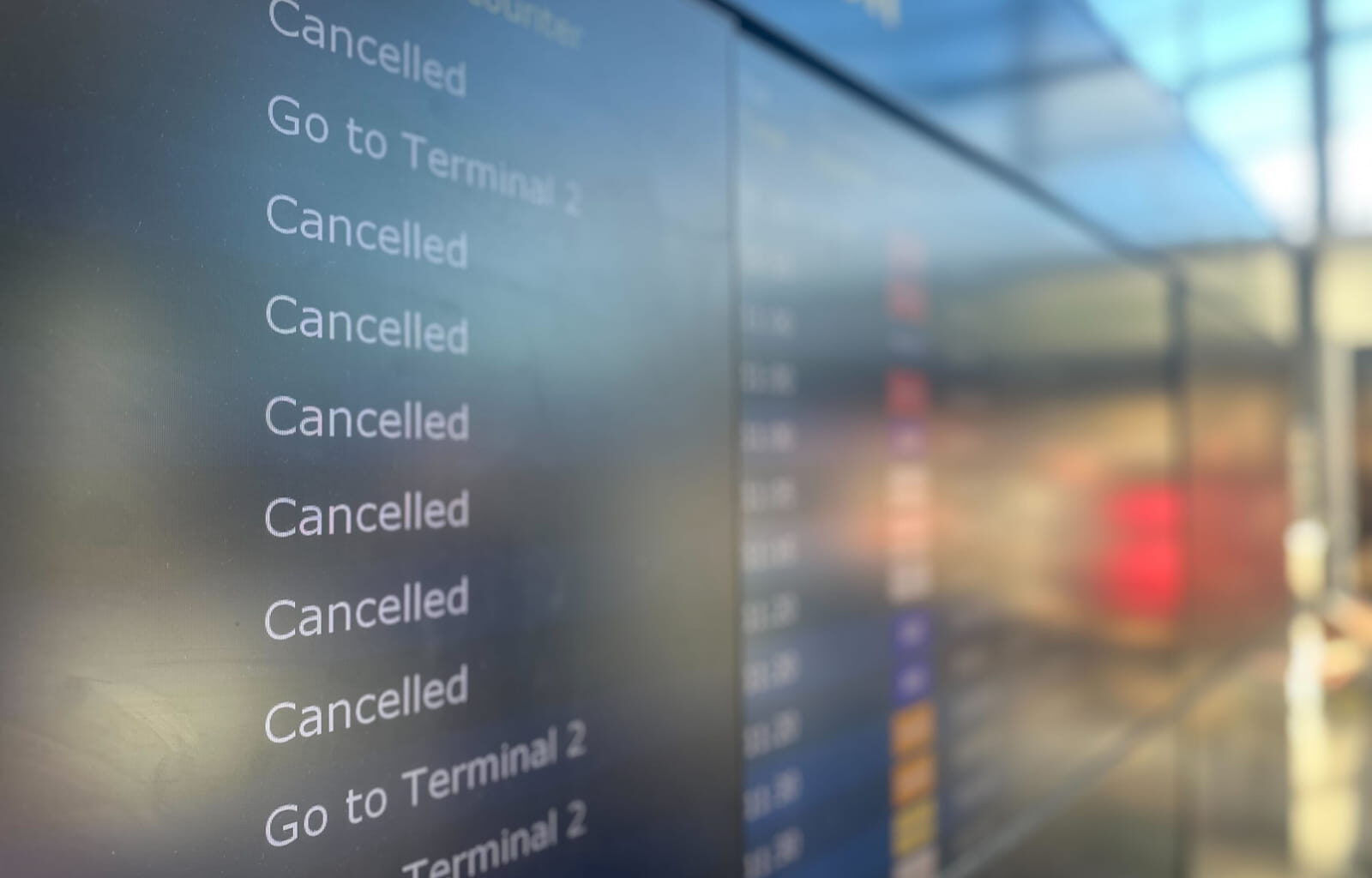Nestled next to a rusted-out Soviet-era Antonov biplane is Copenhagen’s Flying Grill, a popular spot for families and plane spotters to tuck into Danish pork roast sandwiches while watching passenger jets hurtle down the runway for takeoff.
I was there over the weekend to eat ice cream while my Australian and Danish aviation nerdburger mates, including a visiting Qantas pilot, spent the afternoon showing off a cool party trick – identifying aircraft types within seconds.
If we had been standing at the same lookout on Monday night, it would have been a disappointing show – five planes were banked up on the taxiways and later sent back to the gates as three unidentified drones buzzed about.
The real action was unfolding on Flightradar24, where multiple planes could be seen in holding patterns before being diverted to other airports. The suspicious drone sightings halted landings and takeoffs for four hours, disrupting some 20,000 passengers and delaying or cancelling 100 flights. Norwegian authorities were also forced to close the airspace at Oslo airport after a separate drone incident.
Danish police opted not to shoot down the drones, citing safety risks. It no doubt shocked authorities how easy it was to shut down the biggest airport and how unprepared they were against an unconventional threat.
Denmark’s Prime Minister Mette Frederiksen characterised the incident as “the most serious attack on Danish critical infrastructure to date”.
The centre-left leader has become increasingly hawkish and national security-minded in recent years, as the Ukraine-Russia conflict drags on. Earlier this month, her government announced Denmark’s largest arms purchase ever – 58 billion Kroner (A$13 billion) on air defence systems. And last week, it flagged a paradigm shift to procure long-range strike missiles.

“The most serious attack on Danish critical infrastructure to date.” Prime Minister Mette Frederiksen speaking on drone activity at Copenhagen Airport on 23 September 2025 (Emil Nicolai Helms via Getty Images)
Frederiksen told Danish broadcaster DR that she could “not rule out” Russia was behind the drones, a claim the Kremlin quickly dismissed as “unfounded” accusations. She said a possible motive could be to “test the limits” and that the incident must be viewed in the context of other events in recent days and weeks.
Danish defence expert André Ken Jakobsson from the University of Southern Denmark told DR that the Copenhagen drone incident may be the “cost of supporting Ukraine” – the small Scandinavian country has been one of Europe’s biggest donors to Kyiv.
Ukrainian President Volodymyr Zelenskyy took to social media to point the finger at Moscow (without providing specific evidence), but Danish police were sticking with the term “capable operator” to describe the perpetrator, as investigations continued. Danish authorities are examining whether the drones may have taken off and landed from a vessel because the airport lies near a busy shipping lane, which is the entry point to the Baltic Sea.
The recent airspace events and the drone wall concept are expected to top the agenda.
Some commentators have also noted that Russian Gerbera drones have a maximum range of 600 kilometres, which in theory could reach Copenhagen from Kaliningrad, about 500 kilometres away. Russia’s Iranian-designed Shahed drones, frequently used in the Ukraine war, can span more than 1700 kilometres. (Incidentally, Port Lincoln Airport in South Australia presently has a surveillance drone trial that is remotely piloted from Melbourne, 850 kilometres away.)
Danish broadcaster TV2 has spotted a police car with an Australian drone jamming system on patrols at Copenhagen airport since Monday night’s shutdown. According to Danish newspaper Berlingske, the DroneSentry-X Mk2 system from the Australian firm DroneShield was mounted on a police vehicle used to protect Zelenskyy during recent visits to Aarhus and Copenhagen in July and early September. The same paper also published an in-depth investigation in mid-September about suspected drone activity over Køge Bay south of Copenhagen in January.
Denmark is set to join Friday’s talks between seven EU countries and Ukraine about a so-called drone wall to protect Europe’s eastern borders from Russian drones and warplanes. The idea of an EU drone wall has been bandied about since May 2023, but perhaps momentum is growing. The recent airspace events and the drone wall concept are expected to top the agenda as EU member states seek to put some flesh on the bones of March’s EU Readiness 2030 white paper.
Thinktank Europa chief analyst Christine Nissen says European leaders must grapple with “what could be a new normal”.
“The situation has shown that we do not have any type of anti-drone system that is working properly in a European context,” Nissen told me.“(Mette Frederiksen) is super eager to use this particular event… to push for something concrete.”
In the meantime, hot dog-eating plane enthusiasts at the Flying Grill will no doubt see beefed-up security at Copenhagen’s airport.
